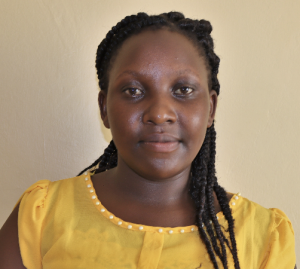Namushiya Primary School is found deep in a rural part of Kakamega. The communication network in the area is quite poor because the area is still opening up to development. Roads leading to the school are graded, but nothing like murram or gravel to ease movement and reduce muddiness. A majority of the community members here live in traditional houses and are peasant farmers. The area's terrain is fairly flat, becoming waterlogged during the rainy season due to the black cotton soil, which is heavy in clay.
Namushiya Primary School was established in 1974 by students' parents to reduce the long distances learners had to travel for education. The community aimed to uplift the level of education in their area as a whole. The school is currently sponsored by the Friends Quakers Church and serves 741 students and 15 teachers and staff.
Despite the large student population, the school has almost no water on campus. Their only source is a seasonal shallow well, which dries up completely in a matter of days once the dry season arrives. Even when the well has water, however, the school requires pupils to carry water from their various homes each morning, knowing that the well water is not enough to meet the entire school's drinking, cooking, and cleaning needs anyway. Walking to school with water and books is tiresome and slows students down, taking away time that could have been utilized for their studies.
"The water challenges we are experiencing in the school have affected us very much. Water for quenching thirst alone has been like looking for gold in the mud, not to mention the environment we study and our sanitation facilities [are not clean]. Also, carrying water from home to school each morning when it is so cold disappoints me most," said Sharon, a teenaged pupil.
Later in the school day, pupils are sent back out to look for water outside the school compound for doing cleanliness chores during break time and games time. During these times, the primary students head to the nearby secondary school to use their borehole well. But the borehole is the secondary school's only source of water, and the primary school students' presence adds a lot of pressure and needs to the one water point.
The primary school's reliance on another school's water point poses many challenges to the primary school. The young pupils have to wait in long queues for the water, letting any secondary students fetch water first. By the time the primary students return to class, they find they have already missed a significant amount of learning each day. Additionally, the primary pupils waste a lot of energy transporting water from one point to another each day, including their homes and the secondary school.
"Scarcity of water in our school has made us reluctant when it comes to hygiene practices in school. Currently, almost all classes are mopped twice a week as opposed to being daily because currently, we don't have a reliable water source from within the school," explained headteacher Essau Kimoi.
"Likewise with the sanitation facilities. The challenge has affected me much as a leader of this school because, with the COVID-19 set measures, the school must have a storage tank of capacity not less than 30,000-liters for pupils to be drawing water from there, placing it in handwashing stations. I feel for the school situation, but my efforts alone can't allow me to change the situation now. I only appeal to well-wishers to help," he said.
Though the water from the secondary school's borehole is safe to drink, teachers cannot say the same about the primary students' water from home. According to the primary school's headteacher Essau Kimoi, they frequently hear cases of coughing and waterborne diseases, including typhoid, among their students. Because water is combined for use at school, even one contaminated source means all students are at risk of water-related diseases. These keep students out of class while recovering and cost their families financially as they seek medical treatment.
What We Can Do:
Rain Tank
A 75,000-liter rainwater catchment tank will help alleviate the water crisis at this school. The school will help collect the needed construction materials such as sand, bricks, rocks, and water for mixing cement. We will complement their materials by providing an expert team of artisans, tools, hardware, and the guttering system. Once finished, this tank will begin catching rainfall used by the school’s students and staff for drinking, handwashing, cooking, cleaning, and much more.
The school and we strongly believe that all of these components will work together to improve standards at this school, which will help lead to better student academic performance and unlock the potential for these students to live better, healthier lives.
Handwashing Stations
The student health club will oversee the two new handwashing stations we will provide and ensure they are kept clean and in working condition. The club leaders will fill the handwashing stations with water daily and make sure they are always supplied with a cleaning agent such as soap or ash.
VIP Latrines
Two triple-door latrine blocks will be constructed with local materials that the school will help gather. Three doors will serve the girls, and three doors will serve the boys. These new latrines will have cement floors designed to be easy to use and clean. And with a rain tank right on school property, there should be enough water to keep them clean.
Training on Health, Hygiene, COVID-19, and More
We will hold a one-day intensive training session with students, teachers, and parents. This training will cover a wide range of topics, including COVID-19 symptoms, transmission routes, prevention; personal and environmental hygiene; and the operation and maintenance of the rain tank, latrines, and handwashing stations. There will be a special emphasis on handwashing.
Our team of facilitators will use various methods to train, including participatory hygiene and sanitation transformation and asset-based community development. We will initiate a student health club, which will prepare students to lead other pupils into healthy habits at school and home. We will also lead lectures, group discussions and provide illustrative handouts to teach health topics and promote good hygiene practices within the school, including handwashing and water treatment. We will then conduct a series of follow-up training before transitioning to our regularly scheduled support visits throughout the year.

 Rainwater Catchment
Rainwater Catchment
 Rehabilitation Project
Rehabilitation Project






































